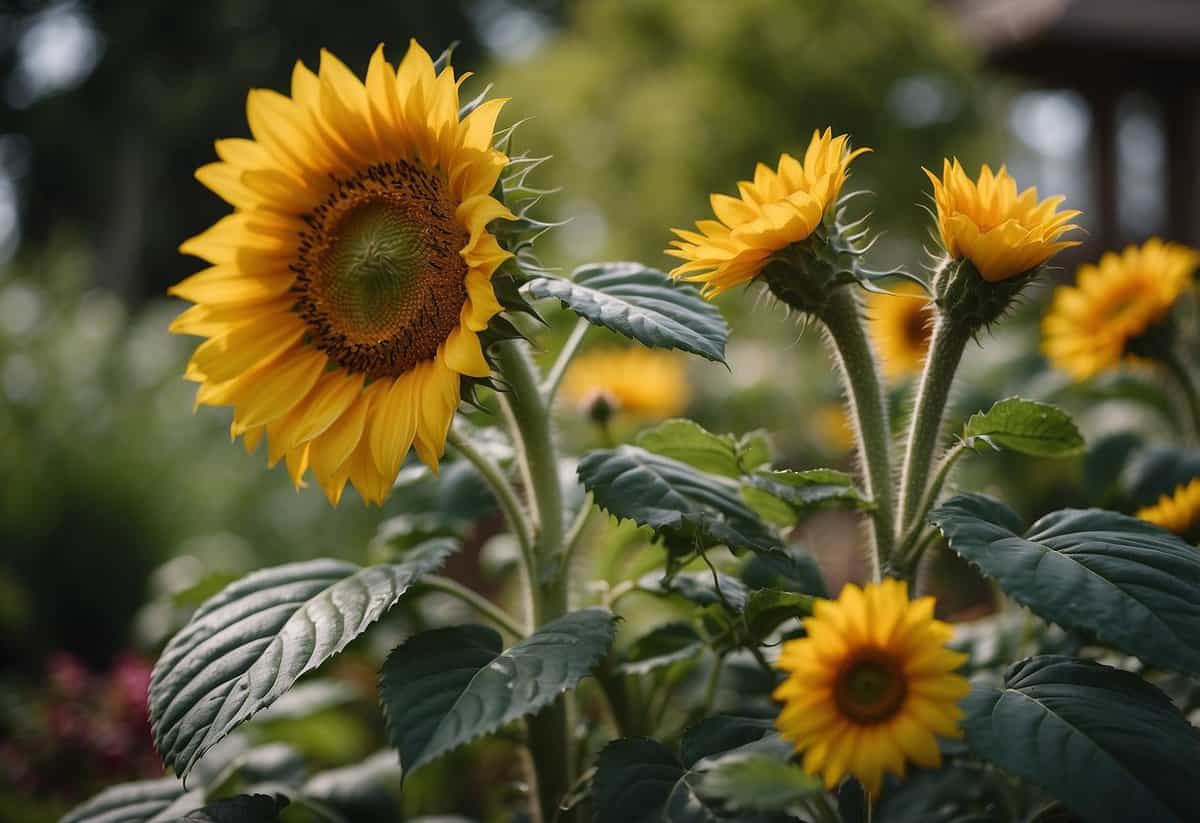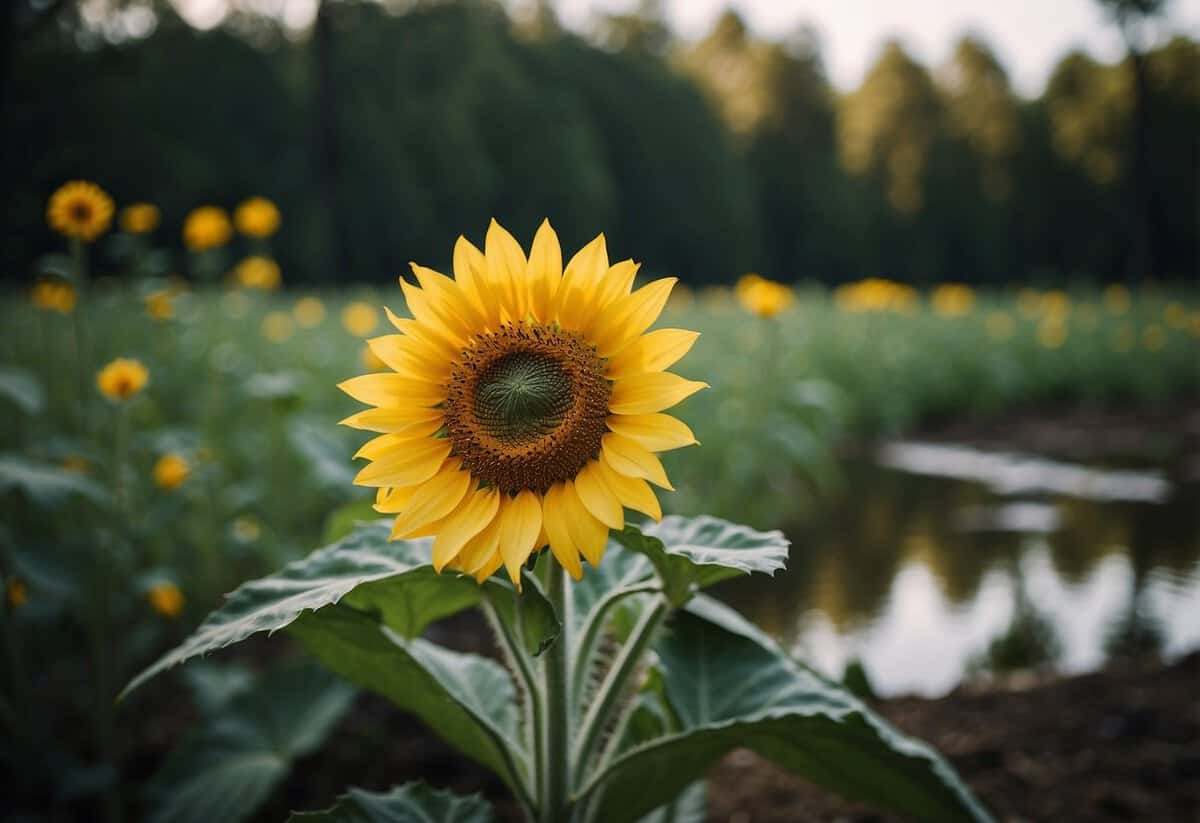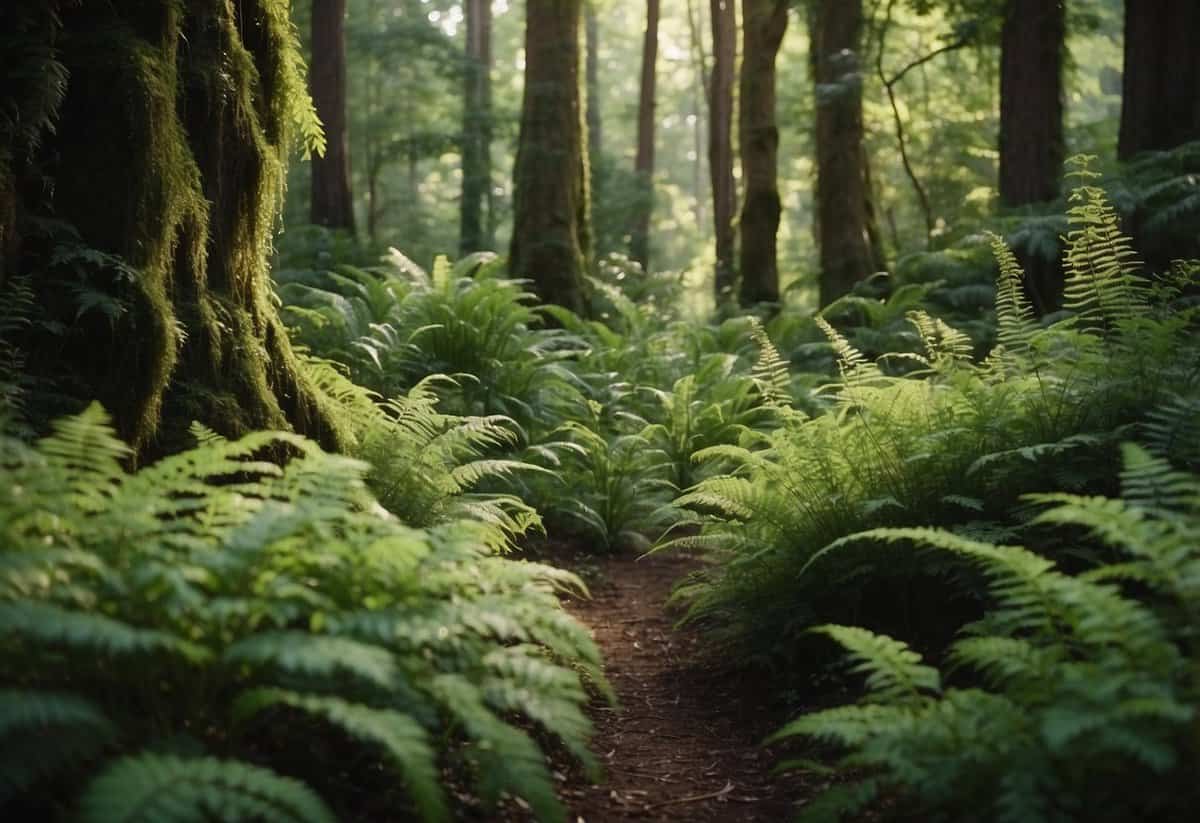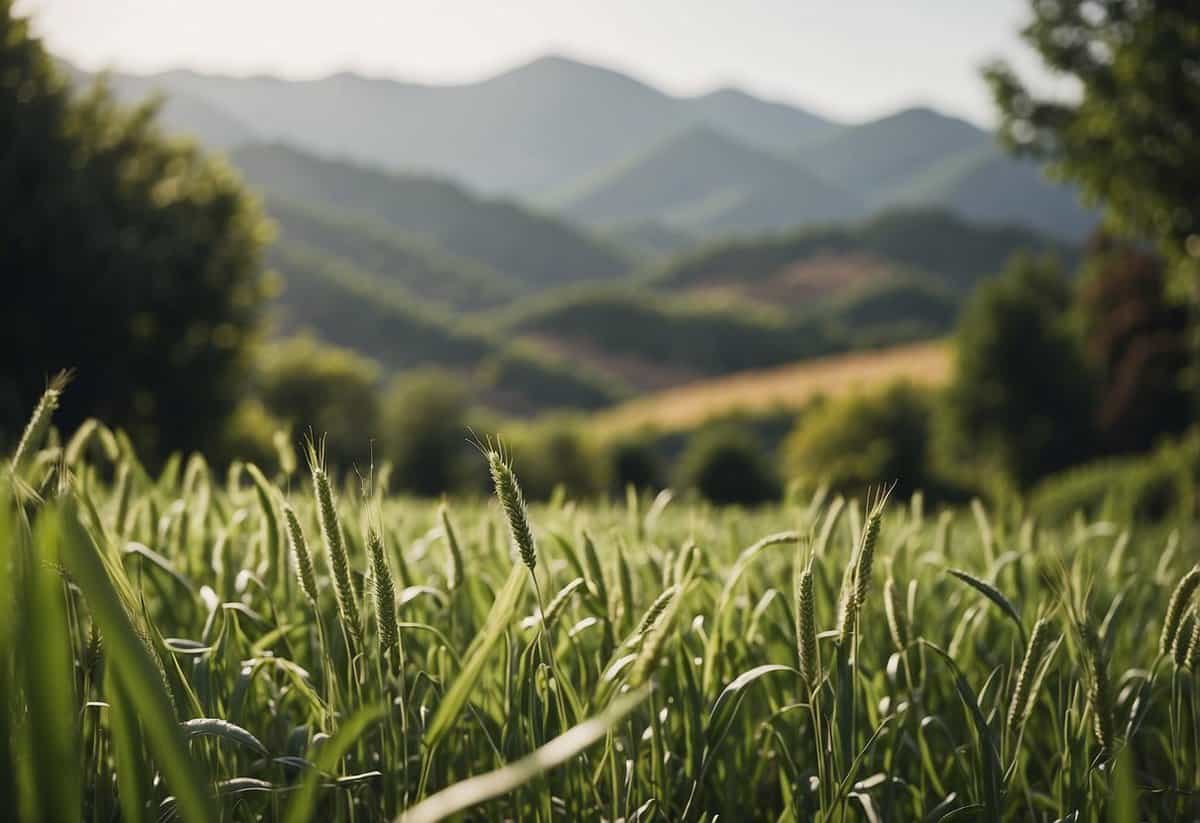What Are 5 Examples of Plants? A Quick Guide
Exploring the plant kingdom is a fascinating journey into the world of botany. There are countless types of plants, each with unique characteristics. Whether you are a gardening enthusiast or just curious, learning about different plants can be rewarding and educational. Here’s a look at five examples of plants that offer a glimpse into the diversity of the plant world.

The world’s largest living plant, the giant sequoia, showcases the incredible scale of tree species found in the plant kingdom. On the other end of the spectrum, algae, an example of single-celled plant organisms, thrive in wet and damp environments. Flowering plants such as roses add beauty and fragrance to gardens around the globe, while ferns, which don’t produce flowers, are often found in shady, moist conditions.
In addition to these, mosses are small, non-vascular plants that play an important role in ecosystems by helping with soil formation and moisture retention. From the towering giant sequoia to the tiny moss, the diversity of plants highlights the incredible variety within the plant kingdom.
Fundamentals of Plant Biology

Plants are incredibly diverse and fulfill vital roles in ecosystems. Key fundamentals include photosynthesis, the life cycle and reproduction, and the diversity in plant structure.
Understanding Photosynthesis
Photosynthesis is how plants produce their own food. They use sunlight, carbon dioxide, and water to create glucose and oxygen. This process happens in the chloroplasts within plant cells. Chlorophyll, the green pigment, captures the light energy.
The energy from sunlight splits water molecules into oxygen and hydrogen. The oxygen is released into the air, which animals and humans need to breathe. The hydrogen combines with carbon dioxide to form glucose. This glucose is essential for the plant’s energy and growth.
Photosynthesis can be summarized as:
- Reactants: Sunlight, water, carbon dioxide
- Products: Glucose, oxygen
The Life Cycle and Reproduction of Plants
Plants have diverse life cycles, often involving both sexual and asexual reproduction. Sexual reproduction requires seeds or spores. Most flowering plants reproduce by creating seeds in fruits. Pollination, the transfer of pollen from one flower to another, is critical for fertilization.
Seeds develop after fertilization and contain the embryo of a new plant. They can remain dormant until conditions are right for germination. Non-flowering plants like ferns produce spores rather than seeds. Spores are tiny and lightweight, allowing them to disperse easily.
Key Points:
- Germination: Seeds sprout and grow into new plants
- Pollination: Transfer of pollen for reproduction
- Spores: Reproductive cells in non-flowering plants
Diversity in Plant Structure
Plants come in many shapes and sizes but share common structures. Roots anchor the plant and absorb water and nutrients from the soil. Stems support the plant and act as conduits for nutrients and water, thanks to their vascular tissue.
The xylem transports water from roots to leaves, while the phloem moves food made in the leaves to other parts of the plant. Leaves are the main site of photosynthesis and have various shapes and arrangements.
Important Structures:
- Roots: Absorb water and nutrients
- Stems: Support and transport
- Leaves: Photosynthesis sites
- Vascular Tissue: Xylem and phloem for transport
Types of Plants and Their Classifications

Plants are incredibly diverse, with each type having unique characteristics and uses. Here, you will learn about some of the major types of plants and their specific features.
Bryophytes and Their Characteristics
Bryophytes include mosses, liverworts, and hornworts. They are non-vascular plants, meaning they do not have a system for transporting water and nutrients. Instead, they absorb water directly through their surface. These plants are typically small and grow close to the ground in damp environments.
Bryophytes do not produce flowers or seeds; they reproduce through spores. They are important for the ecosystem because they help in soil formation and provide habitats for small creatures. You might see them forming green carpets in forest floors or on rocks.
Majestic Ferns and Their Relatives
Ferns belong to a group of vascular plants called pteridophytes. Unlike bryophytes, ferns have a vascular system, which helps them grow taller and thrive in various environments. Ferns reproduce through spores and have large, divided leaves called fronds.
You can often find ferns in shady and moist areas, such as forests and near streams. Some common ferns include the Boston fern and the staghorn fern. They play a crucial role in their habitats by creating shelter for other plants and animals.
Conifers and Flowering Plants
Conifers are woody, shrub-like plants that belong to a group known as gymnosperms. These include pines, spruces, and cedars. Conifers produce cones instead of flowers and have needle-like leaves. They are mostly evergreen, meaning they keep their leaves year-round.
Flowering plants, or angiosperms, produce flowers and seeds enclosed in fruits. This group includes a wide variety of plants like roses, orchids, and oak trees. They have a complex vascular system enabling them to grow in diverse environments. Angiosperms are essential for pollinators like bees and butterflies, contributing significantly to biodiversity.
Learn more about conifers and their relatives to understand their unique structures and importance in nature.
Common Examples of Plants and Their Habitats

Different types of plants thrive in various habitats from dense forests to arid deserts. Each plant type has unique characteristics that suit its environment.
Trees That Define Landscapes
Trees are crucial in shaping landscapes. In North America, the Ponderosa pine thrives in the West, while the Bristlecone pine is native to the Southern Rocky Mountains area. Both species adapt well to their environments.
In the South, you find the Longleaf pine common in sandy soil and warm climates. Cities often feature Maple trees, admired for their vibrant fall colors. These trees are well-suited for parks and streets due to their adaptability and shade-providing canopies.
Shrubby Plants and Their Versatile Nature
Shrubs are versatile, providing structure and beauty. The Rose is a popular shrub that grows in various habitats, from temperate gardens to tropical landscapes. It’s known for its fragrant blooms.
Blueberries thrive in acidic soils and are often found in forests and fields across North America. They provide not only attractive foliage but also delicious fruit. Lilac shrubs are known for their fragrant, lilac-colored flowers, thriving in temperate climates and adding beauty to gardens and parks.
Herbaceous Plants and Groundcovers
Herbaceous plants include soft-stemmed plants that die back in winter and come back in spring. Grasses like Kentucky bluegrass are common groundcovers in lawns due to their lush, green appearance and ability to withstand foot traffic.
Ferns are another example, thriving in moist, shaded forest environments. They don’t produce flowers but are valued for their lush, green fronds. Hostas are popular for garden borders, known for their large, attractive leaves and adaptability to various soil types and light conditions. They prefer shaded habitats and are often found in forest understories.
The Significance of Plants in Ecosystems

Plants play a crucial role in ecosystems. They are the autotrophs that produce their own food through photosynthesis. This process involves chlorophyll, the green pigment in their cells. Because of their ability to create their own food, they form the base of the food chain.
Without plants, ecosystems would struggle. They release oxygen into the air, which is essential for most living beings. This is part of the oxygen cycle, which keeps the air breathable.
Plants also help in the carbon cycle. They absorb carbon dioxide from the atmosphere, reducing greenhouse gases and mitigating climate change. Forests and oceans are huge carbon sinks thanks to plants.
Plants also play a key role in maintaining soil health. Their roots help to prevent soil erosion and improve soil structure. This makes the land more productive and supports agriculture.
Plants are vital for water management too. They store and filter water, making it cleaner for other organisms. Wetlands, which are filled with plants, are particularly efficient at this.
Medicinal plants have been used for centuries. Many modern medicines are derived from plant extracts. They provide natural remedies for various ailments, making medicine more accessible in many parts of the world.
Energy is another area where plants are significant. Biofuels, derived from plant materials, offer a renewable energy source. This reduces our dependence on fossil fuels and promotes sustainability.
In summary, the significance of plants in ecosystems cannot be overstated. They provide food, oxygen, and medicine, support water and soil health, and contribute to climate stability. They are indispensable to life on Earth.
Plants in Human Life

Plants play a crucial role in human life by providing food, enhancing home decor, and offering medicinal and industrial benefits. Their contributions are vital for survival and well-being.
Plants as a Source of Nutrition
Plants are essential for your diet, offering a variety of foods rich in nutrients. Common examples include fruits like apples and oranges, and vegetables like cabbage and tomatoes. These foods provide essential vitamins and minerals needed for a healthy life.
Grains such as wheat are staples in many diets, providing energy and fiber. Legumes and nuts add protein and healthy fats to your meals. By consuming a diverse range of plant-based foods, you get a balanced intake of nutrients necessary for your overall well-being.
Ornamental Plants and Home Decor
Ornamental plants enhance the aesthetic appeal of your home and garden. Houseplants like aloe and ficus not only beautify indoor spaces but also improve air quality.
Flowering plants such as roses and tulips add vibrant colors to any garden. Decorating your living spaces with these plants can create a calming and pleasing environment. Additionally, plants like succulents and cacti are low-maintenance, making them perfect for those who want greenery without much effort.
Medicinal and Industrial Importance
Plants have been used for medicinal purposes for centuries. Many common medicines are derived from plants, such as aloe, known for its healing properties, and willow bark, which is a natural source of aspirin.
Industrially, plants contribute to making products like clothing and furniture. For example, cotton plants provide fibers for textiles, while timber from trees is used to build furniture and houses. Plants like jute are used in manufacturing bags and ropes, showing the diverse industrial applications of plants in everyday life.







